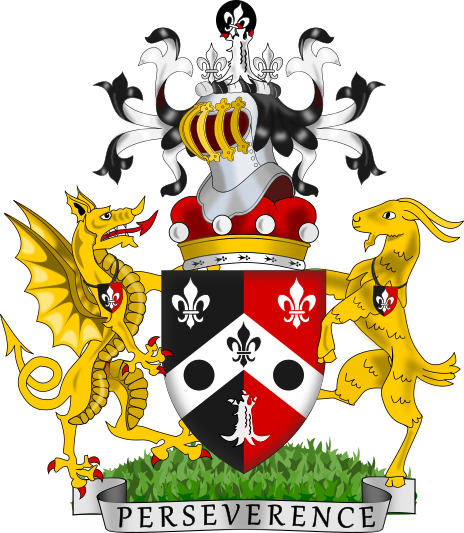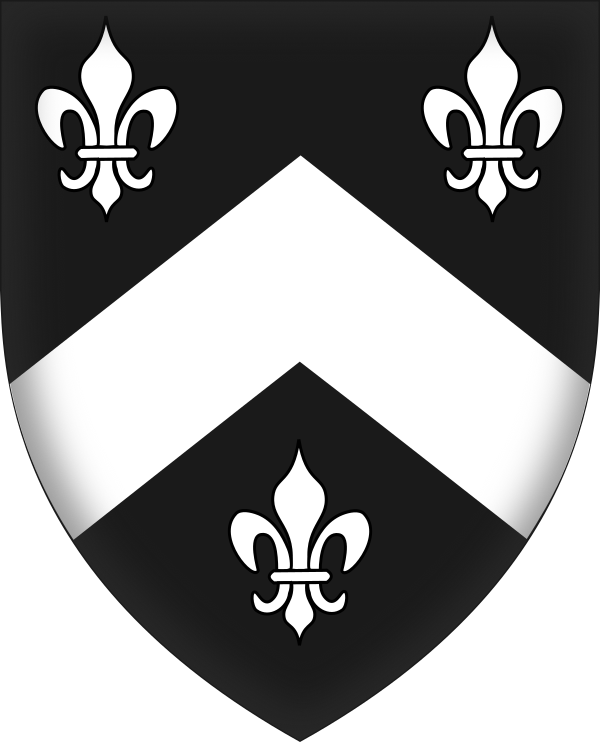 |
BlazonShield: Per pale Sable and Gules, on a chevron between two fleurs de lys in chief and a lion's gamb in base Argent, a fleur de lys Sable between two pellets.. Crest: A lion's gamb erect and erased Argent holding a pellet charged with a fleur de lys, all between two fleurs de lys Argent. Supporters: On the dexter a dragon and on the sinister a goat both Or, suspended round the neck on each on a riband Sable a shield per pale of the last and Gules, thereon a fleur de lys Argent Motto: Perseverance. |
John Jones Jenkins was born in Clydach to Jenkin Jenkins of Morriston and his wife Sarah (née Jones). At the age of 15 he started work at the Upper Forest Tinplate Works in Morriston and rose to the position of out-door Manager at the age of 23. He went on to become a partner in the Beaufort Tinplate Works in Morriston and sole head of the Cwmbwrla Works. His interests expanded to include railways and he became chairman of the Rhondda and Swansea Railway Company and a director of the Mumbles Railway Company and he served in other industrial roles such as on the board of the Swansea Harbour Trust.
Jenkins's public service included election to Swansea Town Council in 1865 and three terms as mayor (1869-70, 1879-80, 1880-81). He served as a Member of Parliament for Carmarthen from 1882 to 1886 and 1895 to 1900.
Jenkins was knighted in 1882, following the visit of the Prince and Princess of Wales to Swansea, and was granted a peerage, as Baron Glantawe, in 1906. He married twice and had two daughters by his first marriage but no sons to inherit the peerage. He died on 27th July 1915 and was buried at All Saints' Church, Oystermouth, which also contains a stained glass heraldic memorial to him.
 |
According to George Grant Francis in his Notes on a gold chain of office presented to the Corporation of Swansea ... (1876) Sir John bore as a coat of arms Sable, a chevron between three fleurs de lys Argent, and this appears as his arms on the Lord Mayor's chain of office. This was an old Welsh coat of arms attributed to the 11th century nobleman Gollwyn ap Tangno and used by people claiming descent from him (he would not have actually born the arms as he pre-dates the existence of heraldry).
It is likely that Jenkins sought to register a coat of arms with the College of Arms at some point after his knighthood or peerage but was unable to use these arms because he couldn't prove descent from a known bearer of them. Therefore he would have been granted new arms which still alluded to the original arms through the inclusion of the white fleurs de lys and chevron.